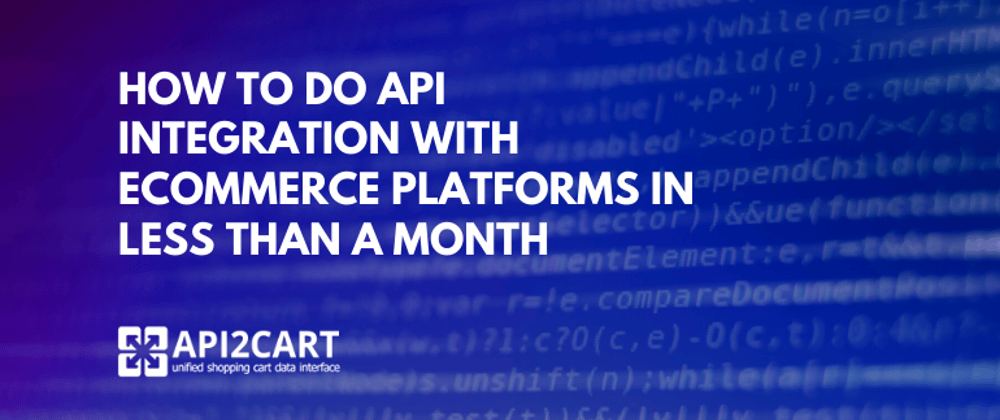API integration with different eCommerce platforms is vital for B2B software vendors to achieve an edge over their competitors. The more shopping carts your SaaS software supports a larger proportion of your customers will find more opportunities to fulfill their needs.
Connections with eCommerce platforms enable you to sync inventories, receive products, submit orders, monitor and manage other required store data.
In this article, you will get to know step by step how your B2B SaaS systems can develop API integration with different shopping platforms and marketplaces in less than 30 days and how API2Cart's unified API can help you with that.
How API Integration Works
It does not matter whether you are a vendor of order management software, mobile app, chatbots, ERP, or any other eCommerce application because customer, product, order, and other information are required for this type of software to run its services. Therefore, this software must integrate with eCommerce platforms and need APIs to do so, because the information is automatically distributed and updated across all eCommerce platforms when API integration is established.
The goal of any API integration is to easily share data between your eCommerce software and shopping platforms and to offer a lot of new benefits to your clients. An API determines how the eCommerce software modules can interact and allow separate, independent systems to link and share data.
How to Do API Integration With eCommerce Platform
Step one - Choose your Shopping Platform
The implementation of integration is the method of linking your software to different eCommerce websites, such as Shopify, Etsy, WooCommerce, Magento, and many others. That enables your eCommerce application to view and process the relevant data from the online shops of your customers through your application. Integration with different eCommerce platforms can bring a lot of benefits for you.
Shopify, for instance, is one of the most common eCommerce shopping platforms and supplies 800,000+ retailers worldwide. Magento is an open-source platform used by more than 250,000 online retailers to operate their shops. Etsy was launched as a marketplace for artisans and craftsmen, but with more than two million online stores from 234 countries, it rapidly developed into the biggest genuine products marketplace.
Step two - Explore documentation
Each eCommerce website has its technical documentation. It explains the basic logic used in the design of the platform. This knowledge is of great significance for SaaS software that wishes to be incorporated with the eCommerce platform. That is because it enables developers to see how the platform functions from within. On the other side, it does not provide too much information, as it just contains information that is valuable to developers focusing on platform integration.
Step three - Define Shopping Cart Integration Patterns
The documentation explains what concepts you can use to support your application. For example, you might need to obtain and modify information regarding products, orders, stock levels, and shipments according to your business strategy. Therefore, you will have to choose the elements and fields that are important to how your software is supposed to operate, determine which HTTP procedures (CRUDs) can take operations on the properties, and construct a template for mapping.
When you recognize what information is needed, worry about authentication and activity notifications. These are key to creating a trustworthy application that many clients can use since authentication is for the protection of profiles and instant updates are for the functionality of your software.
Step four - Develop Integration and Maintain the Connections
Platforms launch many updates, so it is necessary to incorporate support for updated versions. If you don't have skilled developers, be willing to pay a lot of money to software companies for updating the software after the integrations have been published. If the current edition of the platform varies greatly from the previous one, you will need to develop a brand new integration.
A way out might be to recruit a big team of developers, but it could be a frustrating process if you have lots of other technical tasks to do. A busy IT team can be overwhelmed by the constant maintenance needed for only one or two shopping platforms.
Solution for Integration with Multiple eCommerce Platforms
As you can see, eCommerce integration is highly important for software vendors if they want to achieve additional market supremacy in the eCommerce industry. Integrating with just one shopping website is hard, but as we talk about the connection with multiple shopping platforms and services, it gets even more complicated. It is very important to find out how things can be simplified.
The best thing you can do is to choose an integration solution. It allows to integrate with multiple shopping platforms at once. You will be able to retrieve, add, update and sync different store data such as orders, products, customers, categories, etc.







Top comments (1)
Great article on API integration with eCommerce platforms! If you're looking for seamless integration, consider to hire Magento developers.